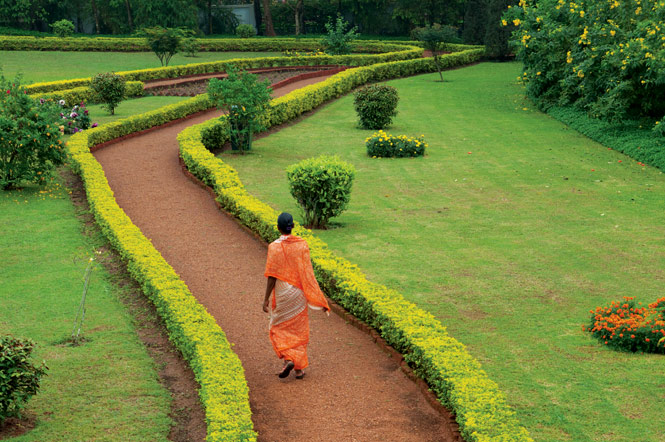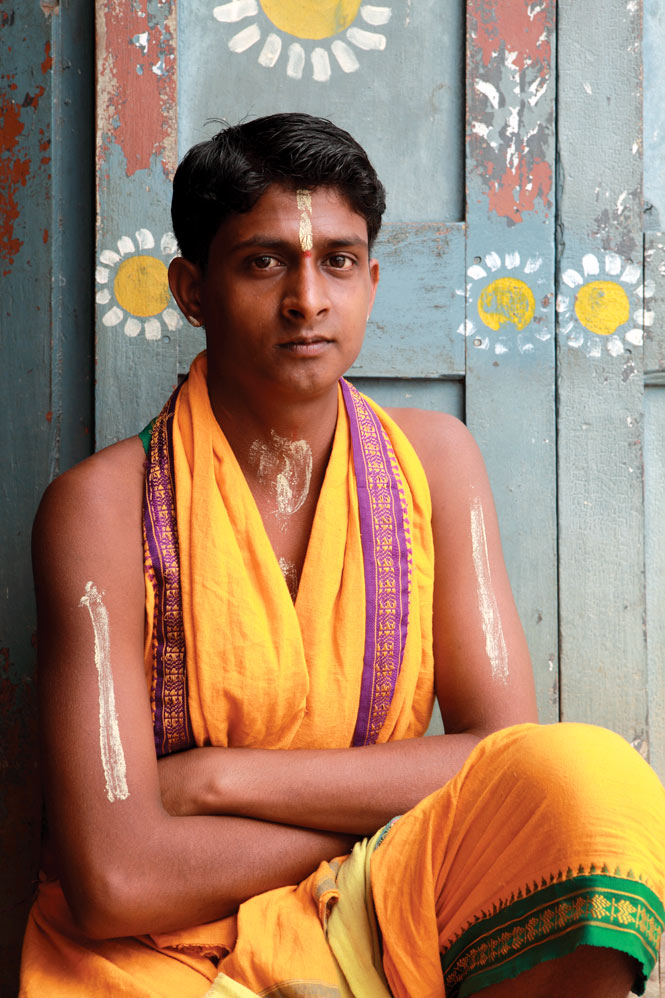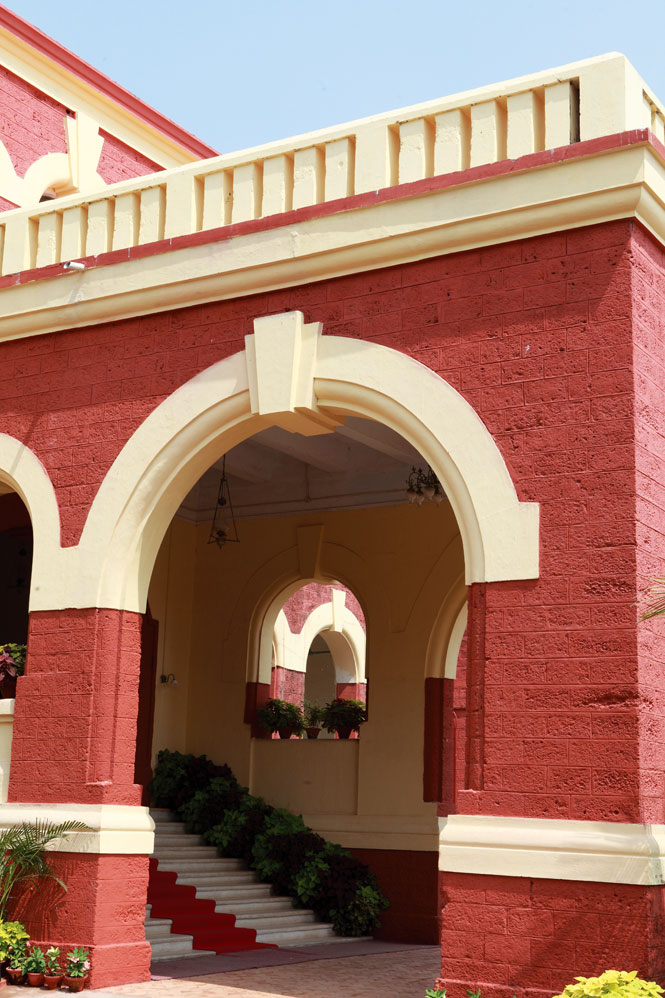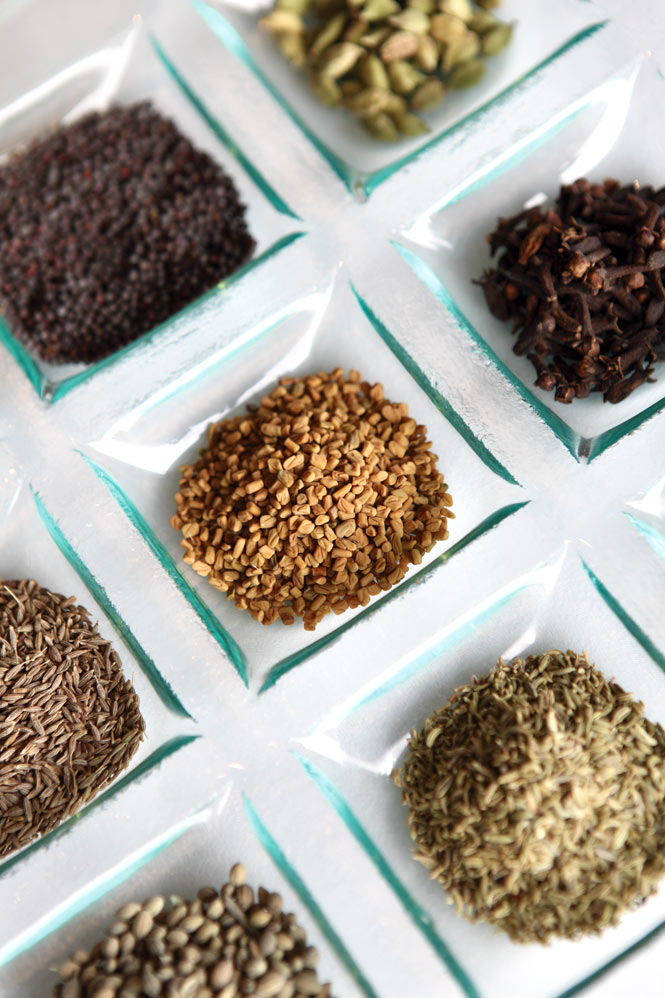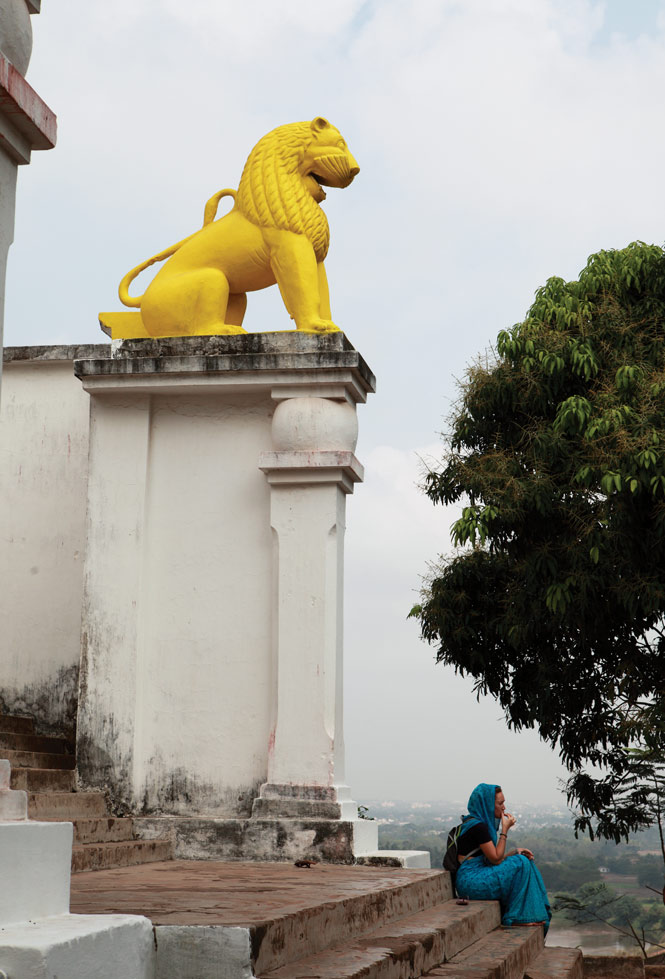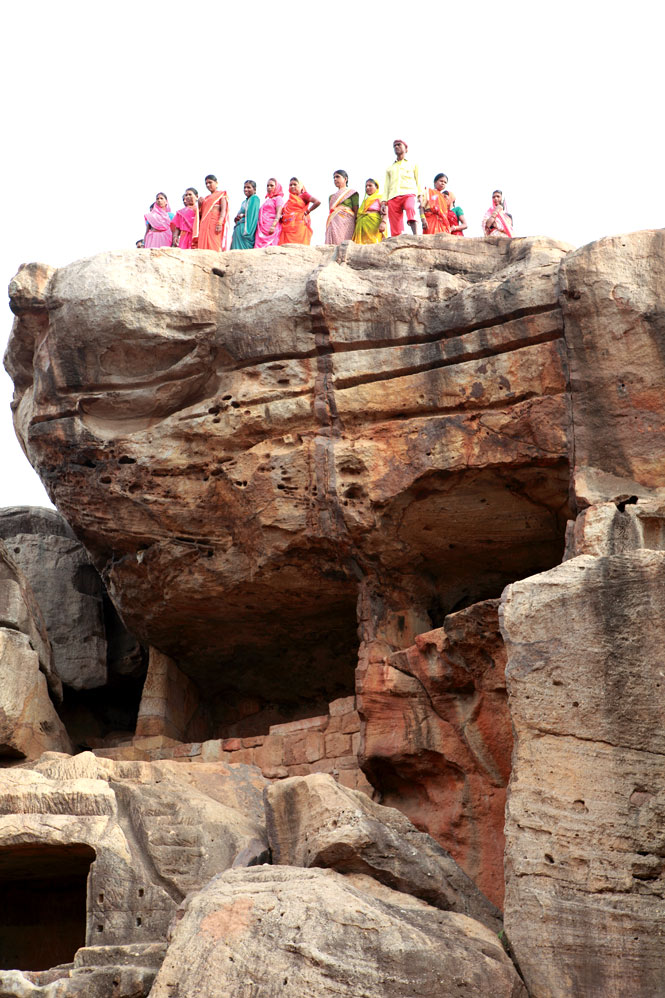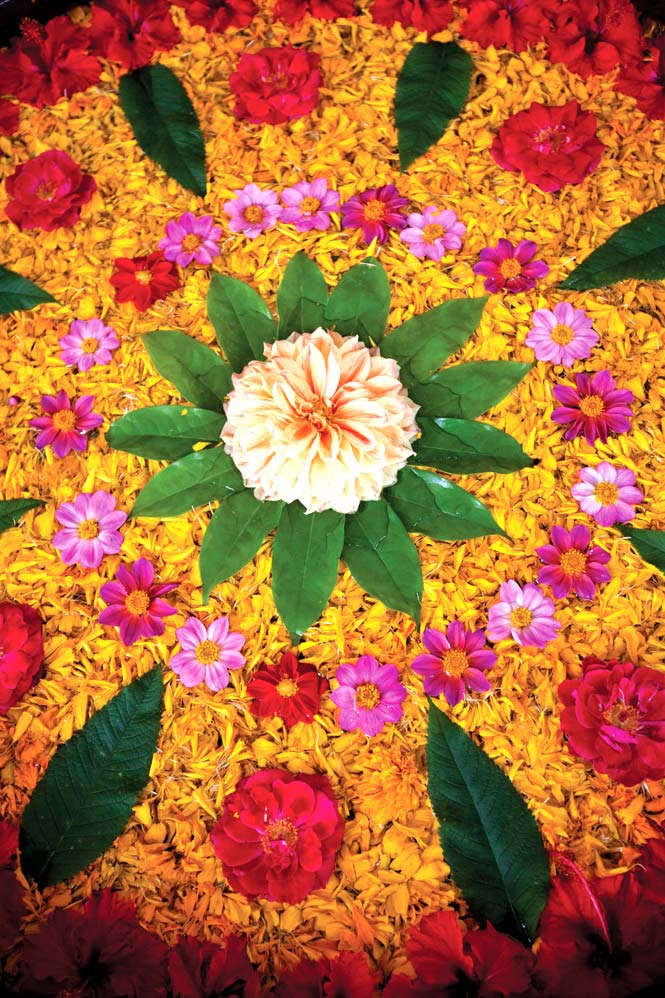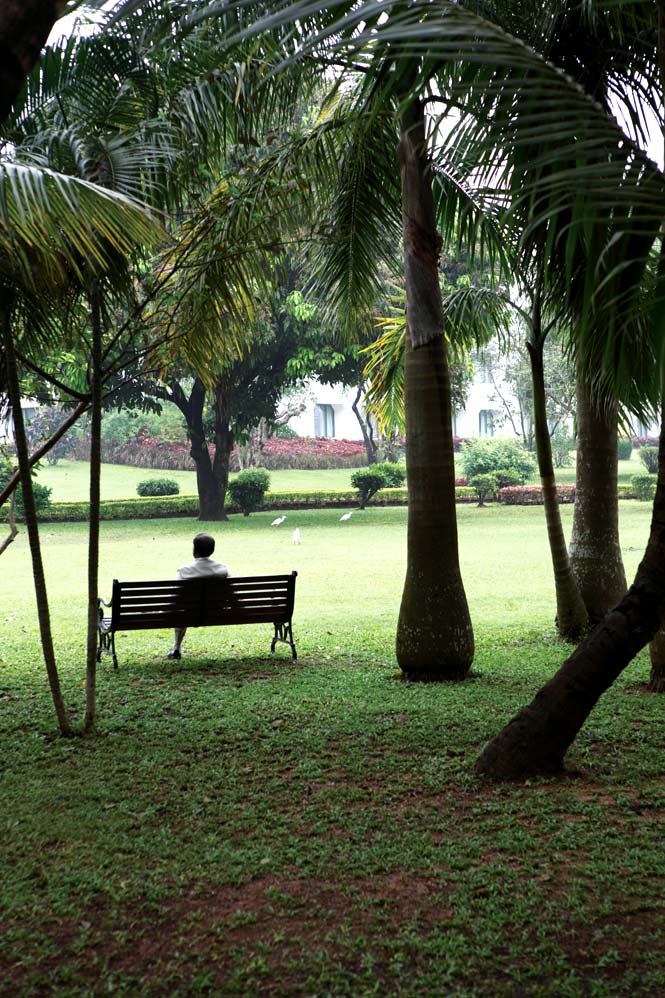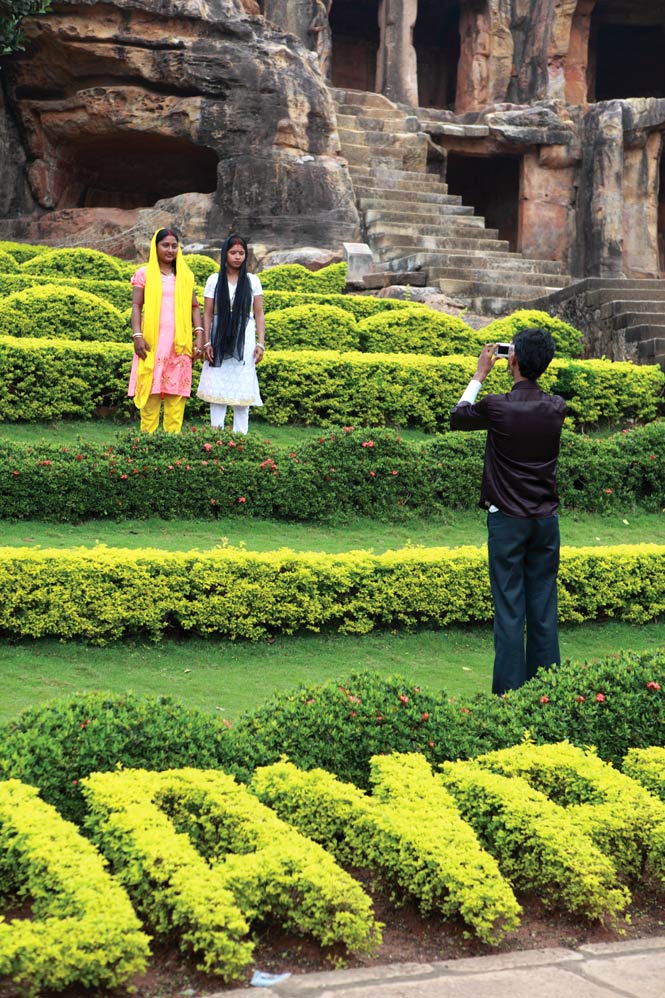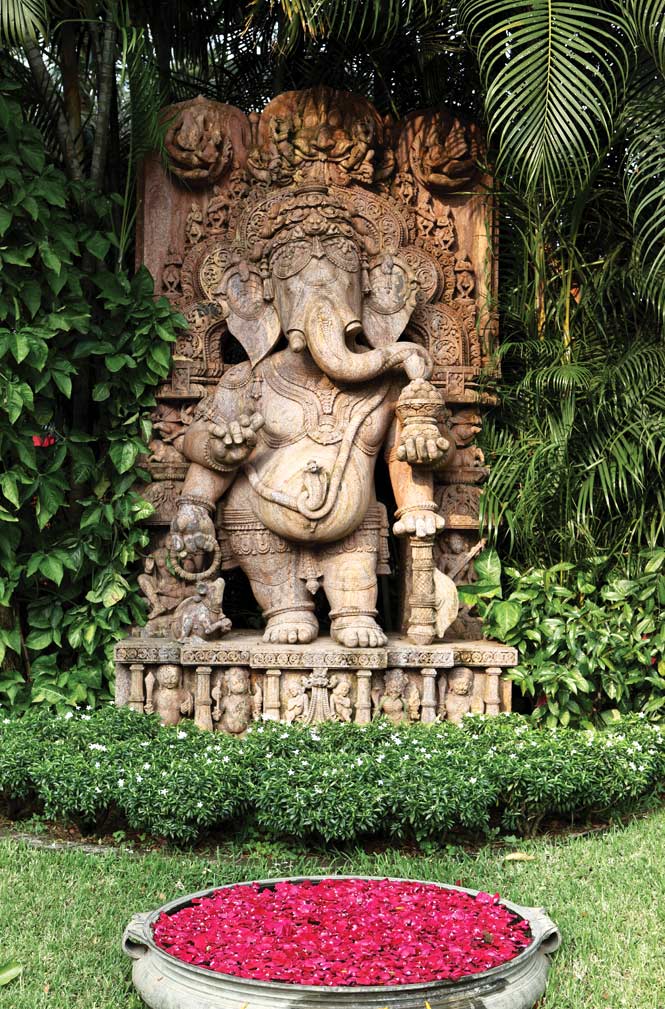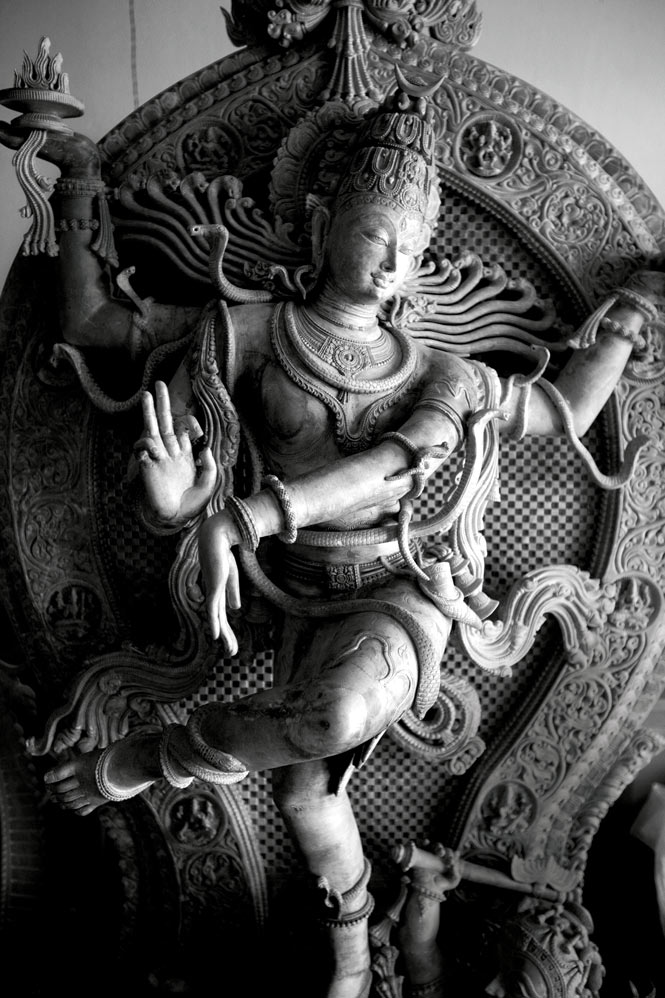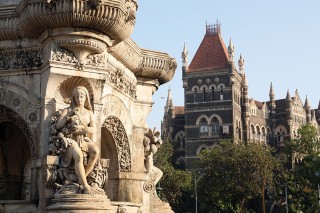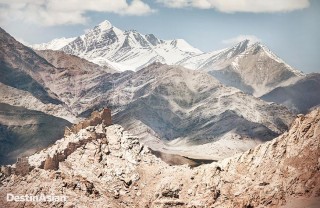Now, thanks to Dalma and several emulators, Oriya restaurants are everywhere, including at the Mayfair Lagoon, whose Kanika dining room puts a five-star spin on the local larder. Some of the state’s most intriguing recipes, at least as Patnaik describes them, are only available on special occasions, such as a vegetable curry called ghanta that is made during the Dwitiya Osha festival, or a slow-cooked mutton dish, poda manso, that is reserved for formal functions. But the everyday fare served at Dalma is remarkable enough, redolent of mustard oil and cumin. I particularly enjoy the kakharu phool pithou—pancakes made from pumpkin flower—and the buttery-mustard flavor of fried rohu, a type of carp. A pungent and crunchy chutney made by crushing gram-flour biscuits together with garlic and spices is so good that I contemplate carting some home. I reckon if Patnaik ever finishes his book, it’ll be a best seller.
Later that day at the Udayagiri and Khandagiri caves, I discover where everyone is. The system of rock-cut chambers, carved out of the hillside for Jain ascetics in the first century B.C., is overrun with chattering groups of teenagers and young couples dressed in their Sunday best. I scramble up the rocks and clamber into the hermit holes, which are hardly bigger than the snow caves I used to dig growing up in Michigan. At the top of the hill, I have a fine view of Bhu-baneswar, which looks every bit a metropolis in the making.
Konark is a small town, hardly larger than a village, about 60 kilometers from Bhubaneswar on the Bay of Bengal coast. The drive there is pleasant enough—harrowing in an Indian taxi, of course, but unimpeded by traffic or the usual yawning potholes of Indian roads. From the moment we leave the city, there are palm trees and freshly harvested rice fields on either side, and all along the road, farmers have swept paddy onto the pavement for threshing by passing vehicles.

